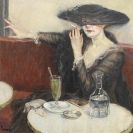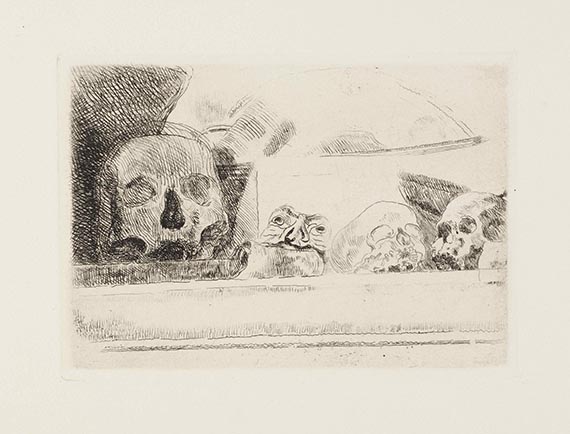
James Jacques Tissot
1836 Nantes
1902 Buillon
The French painter and graphic designer James Jacques Tissot was born on October 15, 1836 in Nantes. In addition to the Dutchman Sir Lawrence Alma-Tadema (1836 – 1912) and the Britons William Holman Hunt (1828 – 1882) and Dante Gabriel Rossetti, the artist from a wealthy family is considered the most important representative of Victorian painting. Above all, he is known for his portraits in the Victorian style of the 1870s.
Around 1856, James Jacques Tissot moved to Paris and began his studies at the École des Beaux-Arts. Among others, he studied here under Jean-Auguste-Dominique Ingres (1780 – 1867), Hippolyte Flandrin (1809 – 64), and Louis Lamothe (1822 – 69). In addition, he met Edgar Degas (1834 – 1917) and Édouard Manet (1832 – 83) and cultivated life-long friendships with them. In 1859, the favorite painter of the Paris upper class exhibited for the first time at the Paris Salon. He displayed the work Promenade dans la neige. Two years later, James Jacques Tissot showed Rencontre de Faust et de Marguerite, a depiction of Goethe‘s Faust, here. This work was immediately purchased by the French State for the Musée du Luxembourg. In 1866, the artist even received a medal at the Salon. However, the series La Femme a Paris also brought Tissot the deserved artistic recognition outside of the Salon.
During the German-French war, the artist had to leave France and fled to England in May 1871. He changed his name from Jacques-Joseph to James Jacques, painted many portraits of the English upper class and was also considered their favorite painter. In 1874, Tissot rejected an invitation to the first impressionist exhibition. During the subsequent years, he also devoted himself to etching – encouraged by Simon Haden - and drew caricatures for the British magazine Vanity Fair.
Beginning in 1876, the artist lived with Kathleen Newton (1854 – 82), who became his muse and his favorite model. But Newton took her own life in 1882 at the age of just 28 years. This caused Tissot to return to Paris and led him to mysticism, spiritism, and later to Catholicism. Among others, he was friends with the brothers Jules (1830 – 70) and Edmond (1822 – 96) Goncourt and completed ten etchings for their novel Renée Mauperin. In 1889, James Jacques Tissot received the gold medal of the Paris World Exhibition. He devoted himself to illustrating the Bible during the last 15 years of his life. He took numerous trips to Palestine and prepared the detailed preliminary sketches for the Tissot Bible, which was published in 1896.
Jacques-Joseph Tissot died on August 8, 1902 in Buillon.

Would you like to sell a work by James Jacques Tissot?
Infos for seller






